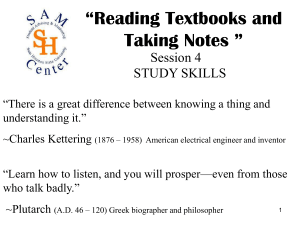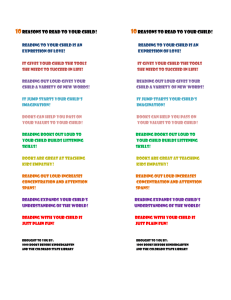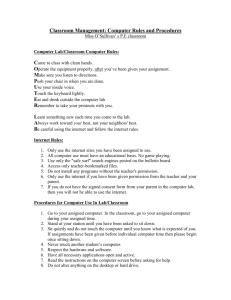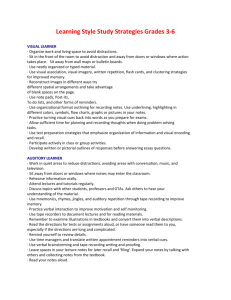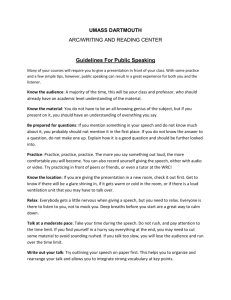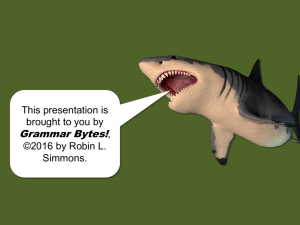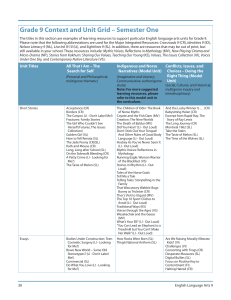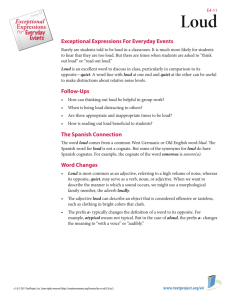Study Strategies for Three Learning Modes
advertisement
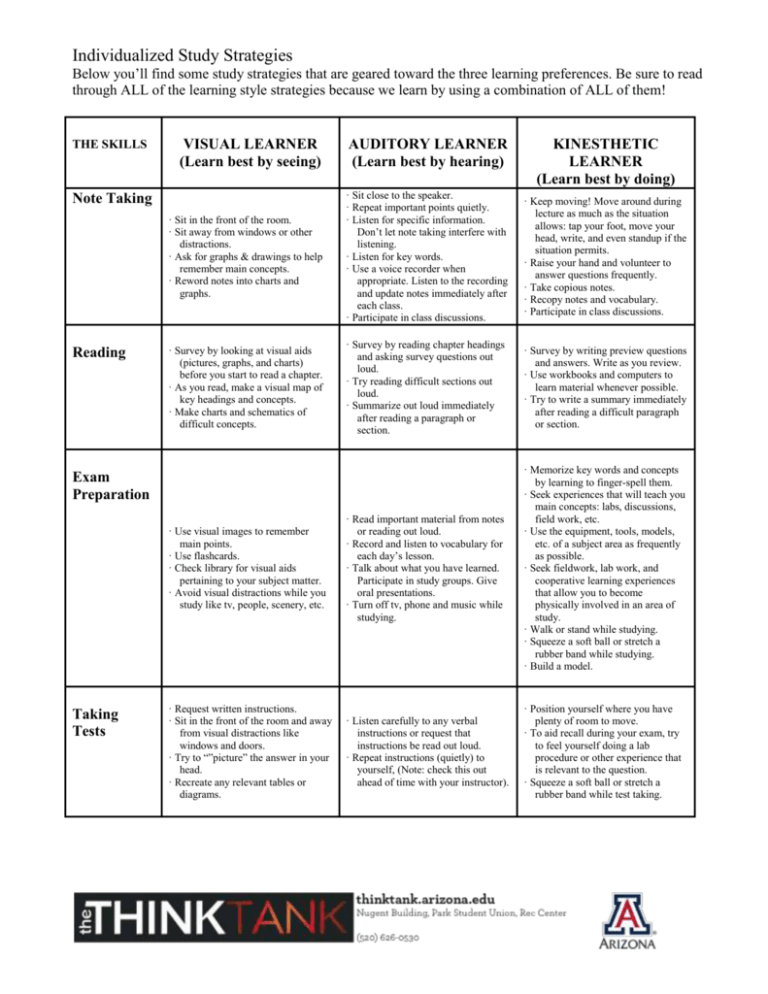
Individualized Study Strategies Below you’ll find some study strategies that are geared toward the three learning preferences. Be sure to read through ALL of the learning style strategies because we learn by using a combination of ALL of them! THE SKILLS VISUAL LEARNER (Learn best by seeing) AUDITORY LEARNER (Learn best by hearing) · Sit in the front of the room. · Sit away from windows or other distractions. · Ask for graphs & drawings to help remember main concepts. · Reword notes into charts and graphs. · Sit close to the speaker. · Repeat important points quietly. · Listen for specific information. Don’t let note taking interfere with listening. · Listen for key words. · Use a voice recorder when appropriate. Listen to the recording and update notes immediately after each class. · Participate in class discussions. · Keep moving! Move around during lecture as much as the situation allows: tap your foot, move your head, write, and even standup if the situation permits. · Raise your hand and volunteer to answer questions frequently. · Take copious notes. · Recopy notes and vocabulary. · Participate in class discussions. · Survey by looking at visual aids (pictures, graphs, and charts) before you start to read a chapter. · As you read, make a visual map of key headings and concepts. · Make charts and schematics of difficult concepts. · Survey by reading chapter headings and asking survey questions out loud. · Try reading difficult sections out loud. · Summarize out loud immediately after reading a paragraph or section. · Survey by writing preview questions and answers. Write as you review. · Use workbooks and computers to learn material whenever possible. · Try to write a summary immediately after reading a difficult paragraph or section. · Use visual images to remember main points. · Use flashcards. · Check library for visual aids pertaining to your subject matter. · Avoid visual distractions while you study like tv, people, scenery, etc. · Read important material from notes or reading out loud. · Record and listen to vocabulary for each day’s lesson. · Talk about what you have learned. Participate in study groups. Give oral presentations. · Turn off tv, phone and music while studying. · Memorize key words and concepts by learning to finger-spell them. · Seek experiences that will teach you main concepts: labs, discussions, field work, etc. · Use the equipment, tools, models, etc. of a subject area as frequently as possible. · Seek fieldwork, lab work, and cooperative learning experiences that allow you to become physically involved in an area of study. · Walk or stand while studying. · Squeeze a soft ball or stretch a rubber band while studying. · Build a model. · Request written instructions. · Sit in the front of the room and away from visual distractions like windows and doors. · Try to “”picture” the answer in your head. · Recreate any relevant tables or diagrams. · Listen carefully to any verbal instructions or request that instructions be read out loud. · Repeat instructions (quietly) to yourself, (Note: check this out ahead of time with your instructor). · Position yourself where you have plenty of room to move. · To aid recall during your exam, try to feel yourself doing a lab procedure or other experience that is relevant to the question. · Squeeze a soft ball or stretch a rubber band while test taking. Note Taking Reading Exam Preparation Taking Tests KINESTHETIC LEARNER (Learn best by doing)




